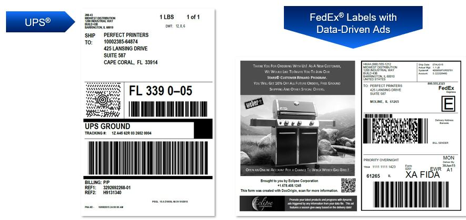According to Mike Porter for MailingSystemsTechnology.com, print isn’t dead, but the mail and print industry sure does need to be more careful to keep up with the times.
Porter points out some of the plethora of conveniences and enhancements technology provides for our everyday lives such as online banking, shopping, ride sharing, automatic re-orders, and so much more. With all of these obvious uses and improvements, it is often still surprising that many companies overlook some of the most important ways that technology can improve their everyday business such as their mission critical forms, documents and labels and their business communications.
He suggests that the print and mail industry does have some room for improvement, and we agree wholeheartedly! You don’t have long at all to get a customer’s attention with mailings or convince them to even open the correspondence, much less actually make a decision or action based on a piece of mail you sent them. Porter has some really good advice about what can be done to overcome these challenges and we have some additional notes to add.
He says, “Mail need not compete with high-tech applications, but it shouldn’t be stagnant. Use accessible technology to contact people at strategic times, not only on a batch cycle basis. Employ data to make offers more relevant to each individual. Dynamically adjust envelope artwork to inform mail recipients there’s something different in the envelopes, designed just for them.” With DocOrigin and Business Communications Center, you can meet these goals. Here are just a few of the ways:








The last bit of important advice Porter provides is, “Objectively inspect the materials your organization produces. Show them to friends and acquaintances and ask them what they could receive in the mail that would prompt them to take the action the mail pieces are intended to prompt. Would access to a personalized web page interest them? An indication that the message is based on the recipient’s personal profile? Immediate feedback or a reward? It might be time to start with a blank sheet and try something different as a pilot project. Your clients may be surprised at the result.”
To read Mike Porter’s full article, click here.

